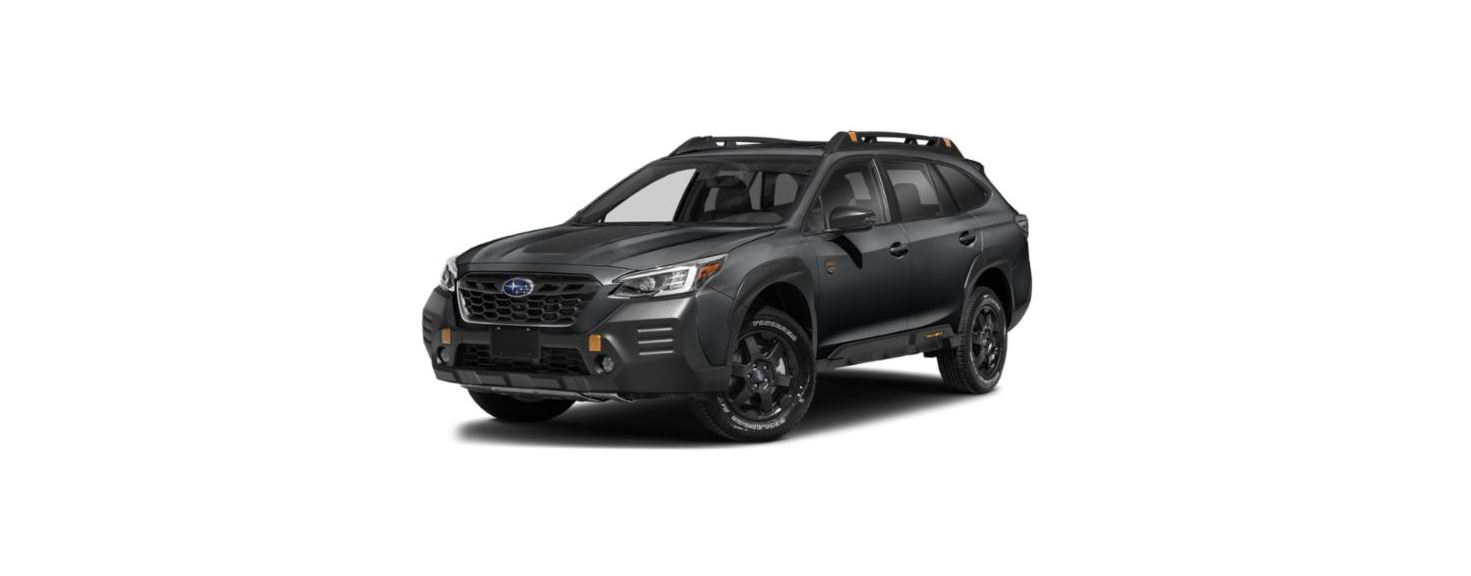2022 Subaru Outback Remote Engine Start System (Dealer Option)
Remote Engine Start System (Dealer Option)
WARNING
- There are some general precautions when starting the engine. Carefully read the precautions described in “General Precautions When Starting/Stopping Engine” P338.
- Do not remote start a vehicle in an enclosed environment (e.g. closed garage). The prolonged operation of a motor vehicle in an enclosed environment can cause a harmful build-up of carbon monoxide. Carbon monoxide is harmful to your health. Exposure to high levels of carbon monoxide can cause headaches, dizziness or in extreme cases unconsciousness and/or death.
The remote engine start system allows you to start the engine from outside the vehicle. In addition, the remote engine start system can activate the heater or air conditioner, providing you with a comfortable cabin upon entry. For more details, refer to the Owner’s Manual Supplement for the remote engine start system.
NOTE
- The length of time for which it is acceptable to allow the engine to remain idling may be bound by local laws and regulations. Check the local rules when using the remote engine start system.
- When taking your vehicle in for service, it is recommended that you inform the service personnel that your vehicle is equipped with a remote engine start system.
Remote Engine Starter Transceiver (Fob)

- Fob button
Starting the engine
NOTE All vehicle doors (including the rear gate) and the engine hood must be closed prior to activating the remote engine start system. Any open entry point will prevent starting or cause the engine to stop. The remote engine start system is activated by pressing the fob button on your remote engine starter transceiver (fob) twice within 3 seconds. If the fob is within operating range of the system and the start request is received, the following will occur.
- The fob flashes and beeps once.
- The horn sounds once.
- The side marker lights, taillights, and parking lights flash once.
If the fob is not within range (the user is too far away from the vehicle), the fob will indicate two long flashes without beeping. The system will check certain safety preconditions before starting, and if all conditions are met, the engine will start within 5 seconds. After the engine starts, the following will occur.
- The fob flashes and beeps twice.
- The horn sounds once.
- The side marker lights, taillights, and parking lights flash once.
While the engine is idling via the remote engine start system, the following will occur.
- The side marker lights, taillights, and parking lights remain illuminated.
- The fob button flashes once every 3 seconds.
- The power windows are disabled.
If the engine turns over but does not start (or starts and stalls) the remote engine start system will power off and then attempt to start the engine 3 additional times. The system will not attempt to restart the engine if it determines a vehicle malfunction is preventing starting. If the engine does not start after 3 additional attempts, the remote engine start request will be aborted.
Stopping the engine
Press and hold the fob button for at least 2 seconds to stop the engine. The fob will flash and beep three times, indicating the engine has stopped. If the stop request is not received (for example, if the user is too far away from the vehicle), the fob will continue to flash once every 3 seconds. The system will automatically stop the engine after 15 minutes
Remote start safety features
For safety and security reasons, the remote engine start system will prevent starting (or stop the engine if running) and sound the horn twice if any of the following conditions is detected. In addition, the fob will flash and beep 3 times.
- The total run-time has exceeded 20 minutes.
- The brake pedal is depressed.
- A key is in the ignition switch.
- The engine hood is open.
- The engine idle speed exceeds 3,500 rpm.
- The security alarm is triggered.
- The select lever is not in the “P” position.
If the system detects any door (including the rear gate) open during operation, it will prevent starting or stopping the engine, and sound the horn and flash side marker lights, taillights, and parking lights 6 times. In addition to the items above, if the vehicle’s engine management system determines there is a safety risk due to a vehicle-related problem, the vehicle will power down and the horn will sound 3 times
NOTE
- If the alarm system is armed at the time of remote engine starter activation (the security indicator light on the combination meter is flashing), the alarm system will remain armed throughout the remote start run cycle.
- If the alarm system is disarmed at the time of remote engine starter activation (the security indicator light on the combination meter is not flashing), the alarm system will remain disarmed throughout the remote start run cycle.
Remote start operation – fob confirmation
Your remote engine starter fob is a bidirectional transceiver that can confirm system operation with several different visual and audible indications. The fob’s LED-backlit button and the internal piezo buzzer will indicate the status of the system using the following flash and beep sequences, provided the fob is within the operational range of the system.
| Precondition | Fob Indication | Meaning | |
| Flash | Beep | ||
| Fob start button is being pressed | Continuous while button is held down | — | The fob is transmitting an RF signal |
|
User attempts to start the engine by pressing fob button twice within 3 sec |
1 flash | 1 beep | Engine start request received |
| 2 flashes | 2 beeps | Engine started successfully | |
| 1 flash every 3 sec | — | Engine idling | |
| 3 flashes | 3 beeps | The vehicle is in range but the engine not started | |
| 2 long flashes | — | Vehicle not in range (engine not started) | |
|
Engine idling by remote engine start operation |
1 flash every 3 sec | — | Engine idling |
| 3 flashes | 3 beeps | Engine stopped by system time-out or for safety reasons (see sections above) | |
| User attempts to stop the engine by pressing and holding fob button for at least 2 sec | 3 flashes | 3 beeps | Engine stopped by user request |
| 1 flash every 3 sec | — | Stop request not received. The engine still idling. | |
Alternate Operation Method for Models with “Keyless Access with Push-Button Start System”
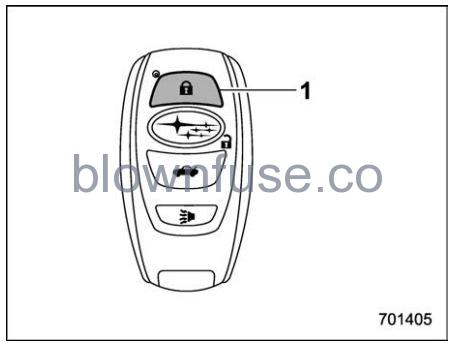
Access key fob
- Lock button
An access key fob can be used as the remote engine start transmitter. Operate the lock button to start or stop the engine as follows.
Before starting the engine
Before using the remote engine start system to start the engine, confirm the following conditions.
- The select lever is in the “P” position.
- All doors including the rear gate are closed.
- The engine hood is closed.
- The push-button ignition switch is in the “OFF” position.
Starting the engine
To start the engine with the remote engine start system, briefly press the lock button twice within 2 seconds, then press and hold the lock button for 3 seconds.
- Press the lock button briefly. The hazard warning flashers then flash once and the keyless buzzer chirps once.
- Within 2 seconds, press the lock button briefly again. The hazard warning flashers then flash once again, and the keyless buzzer chirps once again.
- After step 2, immediately press and hold the lock button. The hazard warning flashers then flash three times, and the horn will honk once.
- Approximately 3 seconds after step 3, release the lock button. The engine will then start successfully.
Stopping the engine
Press and hold the lock button to stop the engine with the remote engine start system.
Remote start safety features
For detailed information, refer to “Remote start safety features” P344
Entering the Vehicle While It Is Running via Remote Start (Models without “Keyless Access with Push-Button Start System”)
- Unlock the vehicle doors using the remote keyless entry system
NOTE
- If the vehicle’s doors are unlocked manually using the key, the vehicle’s alarm system will trigger (if the alarm system is armed prior to activating the remote engine start system) and the engine will turn off. Perform either of the following procedures to disarm the alarm system. Refer to “Alarm System” P143.
- Insert the key into the ignition switch and turn it to the “ON” position.
- Press any button on the remote keyless entry transmitter.
- Enter the vehicle. The engine will shut down when any door or rear gate is opened.
- Insert the key into the ignition switch and turn it to the “START” position to restart the engine.
Entering the Vehicle While It Is Running via Remote Start (Models with “Keyless Access with Push-Button Start System”)
1. Unlock the vehicle doors using the keyless access function and remote keyless entry system.
NOTE
- If the vehicle’s doors are unlocked manually using the key, the vehicle’s alarm system will trigger (if the alarm system is armed prior to activating the remote engine start system) and the engine will turn off. Perform either of the following procedures to disarm the alarm system. Refer to “Alarm System” P143.
- Turn the push-button ignition switch to the “ACC” or “ON” position.
- Press any button on the access key fob.
- Enter the vehicle. The engine will remain running provided the access key fob is present and detected by the vehicle.
- Press the push-button ignition switch once while depressing the brake pedal before driving your vehicle. The remote engine starter transceiver (fob) will flash and beep 3 times to indicate that the remote start system has been shut down.
Entering the Vehicle Following Remote Engine Start Shutdown
An alarm trigger may occur if the vehicle is opened by the remote keyless entry transmitter within a few seconds immediately following the remote engine start shutdown.
Pre-heating or Pre-cooling the Interior of the Vehicle
Before exiting the vehicle, set the temperature controls to the desired setting and operation. After the system starts the engine, the heater or air conditioning will activate and heat or cool the interior to your setting.
Remote Transmitter Program (Remote Engine Starter Transceiver)
New transmitters can be programmed to the remote engine start system in the event that a transmitter is lost, stolen, damaged or additional transmitters are desired (the system will accept up to eight transmitters). New remote engine start transmitters can be programmed according to the following procedure.
- Open the driver’s door (the driver’s door must remain open throughout the entire process).
- Depress and hold the brake pedal.
- Turn the ignition switch to “ON” then “LOCK”/“OFF”, back to “ON” then “LOCK”/ “OFF”, back to “ON” then “LOCK”/“OFF”, then back to “ON” again and leave the ignition “ON” throughout the programming process.
- The system will flash the side marker lights, tail lights and parking lights and honk the horn three times, indicating that the system has entered the transmitter learn mode.
- Press and release the
 button on the transmitter that you want to program.
button on the transmitter that you want to program. - The system will flash the side marker lights, tail lights and parking lights and honk the horn one time, indicating that the system has learned the transmitter. Upon successful programming, the remote start confirmation transmitter button will flash one time.
- Repeat step 5 for any additional transmitters (the system will accept up to eight transmitters).
- The system will exit the transmitter learn mode if the key is turned to the “LOCK”/“OFF” position, the door is closed
System Maintenance
NOTE For remote engine starter transceiver: In the event that the vehicle’s battery is replaced, discharged or disconnected, it will be necessary to start the vehicle a minimum of one time using the key prior to activating the remote engine start system. This is required to allow the vehicle electronic systems to resynchronize.
CAUTION
- Do not let dust, oil or water get on or in the remote engine start transmitter when replacing the battery.
- Be careful not to damage the printed circuit board in the remote engine start transmitter when replacing the battery.
- Be careful not to allow children to touch the battery and any removed parts; children could swallow them.
- There is a danger of explosion if an incorrect replacement battery is used. Replace only with the same or equivalent type of battery.
- The battery should not be exposed to excessive heat such as sunshine, fire, or the like
Changing the battery
- For models with “keyless access with push-button start system”: Perform the procedure described in “Replacing Battery of Access Key Fob” P536.
- For remote engine starter transceiver: The 3-volt lithium battery (model CR-2450) supplied in your remote engine start transmitter should last approximately one year, depending on usage. When the battery begins to weaken, you will notice a decrease in range (distance from the vehicle that your remote control operates). Follow the instructions below to change the remote engine start transmitter battery.
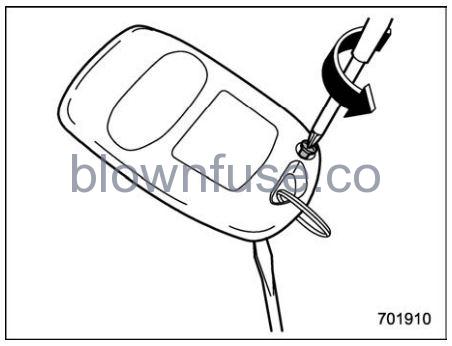
- Remove the small Phillips screw located on the backside lower-left corner of the transmitter.
- Carefully pry the remote engine start transmitter halves apart using a small flathead screwdriver.
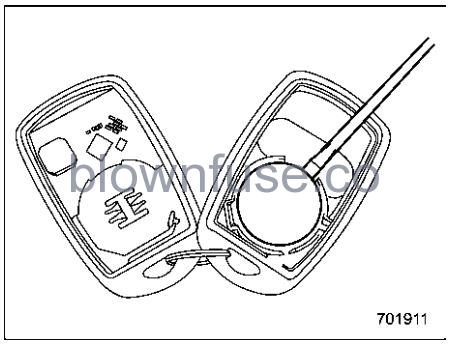
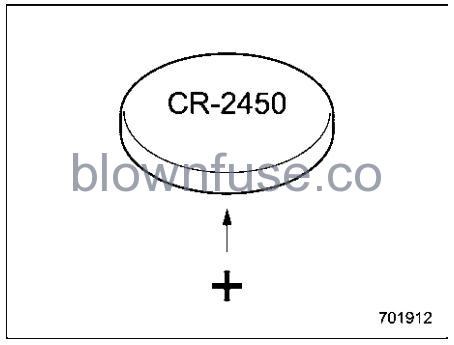
- Remove the circuit board from the bottom half of the case and remove the battery and replace it with a new one. Be sureto observe the (+) sign on the old battery before removing it to ensure that the new battery is inserted properly (battery “+” should be pointed away from the transmitter circuit board on battery).
- Carefully snap the case halves back together, reinstall the Phillips screw and test the remote engine start system.
Certification for Remote Engine Starter
U.S.-spec. models
FCC WARNING
Changes or modifications not expressly approved by the party responsible for compliance could void the user’s authority to operate the equipment.
NOTE
This device complies with part 15 of the FCC Rules. Operation is subject to the following two conditions: (1) This devicemay not cause harmful interference, and (2) this device must accept any interference received, including interference that may cause undesired operation
